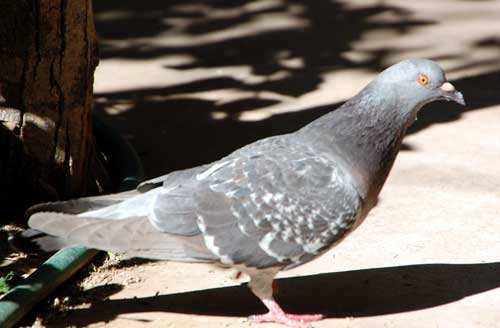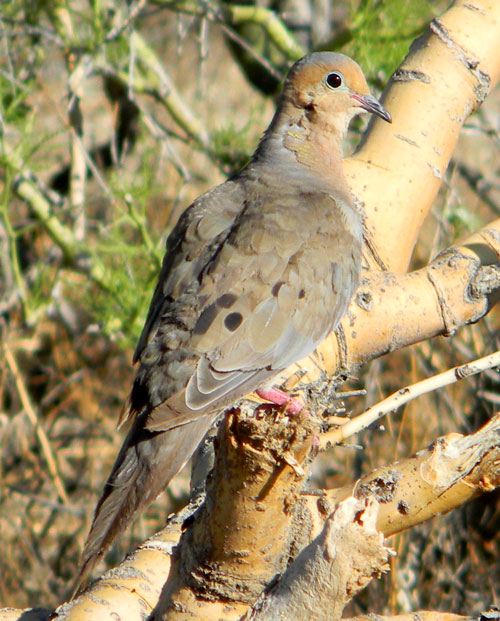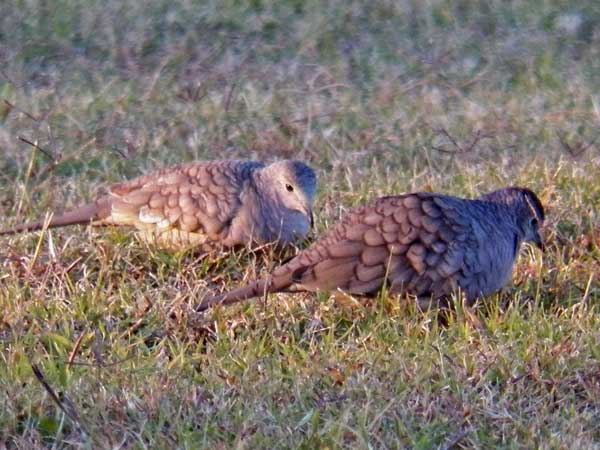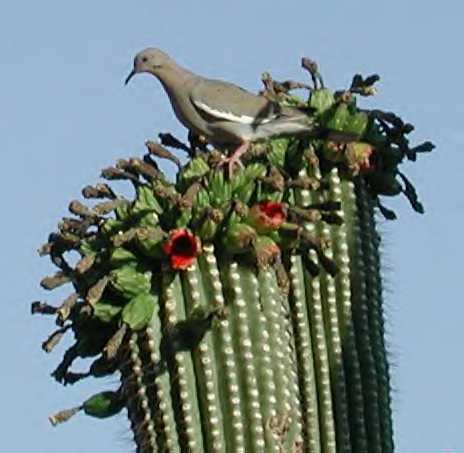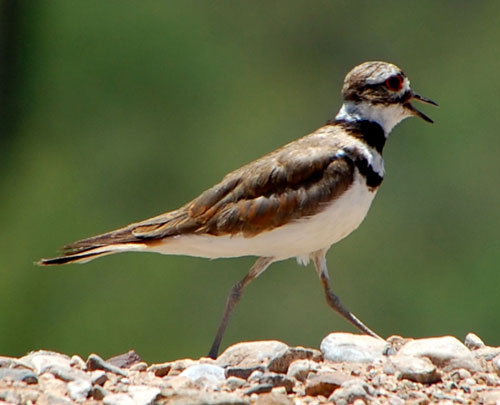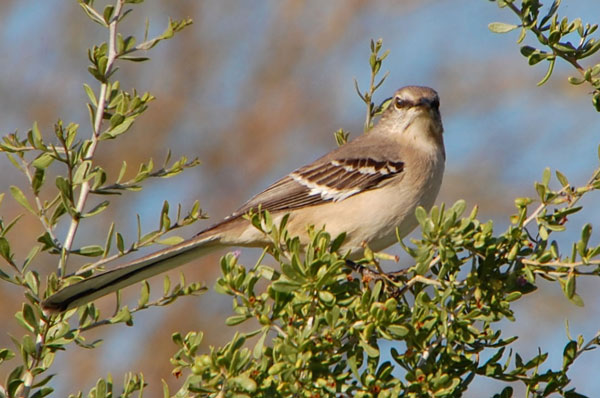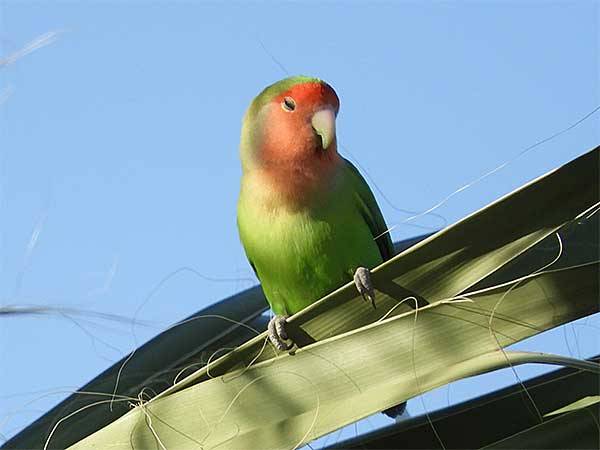Granada Park
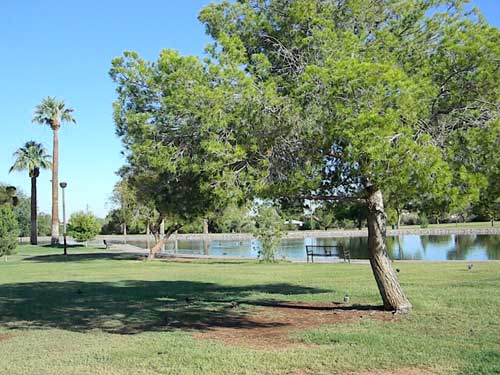
This large Phoenix, Arizona, park, located south of Glendale Avenue near 20th Street, has two ponds
open to recreational fishing, large grassy areas with plenty of shade trees, an
exercise track, and a wide perimeter of more-or-less native desert habitat.
As a result this park affords ample opportunities to view a
variety of urban wildlife, especially birds and insects.
|
View Granada Park in a larger map.
|
BIRDS
Most kinds of birds have a preferred habitat type where they get food. At
Granada Park there are three main habitats. The most expansive of these is mown
grass lawn of mostly bermuda grass turf. Depending on the recent management these
lawns might also have some weeds growing with the grass. Among the most
conspicuous birds on the lawns are doves. The doves, working in groups of three
to a dozen, are nipping off developing seed and flower heads from the grass
plants. If they spot an insect or spider they might grab it too, but mostly
they are herbivores: Miniature lawn mowers with wings?
Rock Dove
To non-bird watchers this bird is simply called a Pigeon. They
were brought to America as domesticated birds and many escaped and began breeding on their own
in cities everywhere. Their original habitat was rocky cliffs
for which man-made structures and bridges make good substitutes. Many
multicolored forms have been bred over the past millennia, but most of those
that breed out of captivity have reverted to the "wild-type" pattern: grey
back, mantle, and tail; darker head, collar, and upper chest and often quite
iridescent in the males. When cooing a potential mate, the males puff up their
chest to display iridescent feathers.
More info ...
|
Mourning Dove
Mostly gray-brown, with a long tapered tail and a slender build. The wings
produce a whistling sound as the birds fly off. Their forlorn cooing is a
characteristic sound of farms and suburbs across America.
More info ...
|
Inca Dove
This is the smallest of the four doves likely to be seen here.
At rest the birds have distinctive scalloped markings. As they fly off, the
rich, brick-red patches show in the wings. The tail is rather long with
conspicuous white on the sides. In Arizona these birds are mostly restricted to
cities and agricultural areas where water is readily available. At Granada Park
they seem partial to bare patches where they find scattered seeds.
More info ...
|
White-winged Dove
White-winged Doves are seen at Granada Park in the late spring
and summer only. The fruit and seeds of the saguaro cactus are a vital food
source for White-winged Doves. But in the cities they also eat great quantities
of grass seeds. It is considerably larger than the Mourning Dove, has a squared
off tail, and as the name suggests, broad white bands in the wings. This white
band is conspicuous in flight.
More info ...
|
Other Birds likely to be seen on turf grass at Granada Park:
Great-tailed Grackle
This is the male Great-tailed Grackle. He's jet black with iridescence,
piercing yellow eyes, and the trademark keel-like tail. Look for them at
water's edge or catching bugs on freshly irrigated turf.
More info ...
|
Great-tailed Grackle
Female grackles look quite different. Muddy brown with an ample, but not huge, tail.
Female Great-tailed Grackles feed the same way but mostly not in the company of
the males. Males are often seen in small groups, strutting about, hoping to gain their attention.
More info ...
|
Killdeer
Killdeer are frequent birds at sea and lake shores, but they have also found
expanses of open, mowed lawns suitable for hunting invertebrates. Note
the double band at neck.
More info ...
|
Northern Mockingbird
When not seeking fruit, these birds hunt relentlessly for spiders, caterpillars
and crickets in mown lawns. A patch of white flashes in the wings on flight and
the tail is long, black with white on the edges.
More info ...
|
Rosy-faced Lovebird
After escaping from pet owners these small parrots found the desert city environment very kind. They are now
among the most common birds around Phoenix! Native to Namibia.
More info ...
|
DRAGONFLIES
Like ponds everywhere, there are plenty of dragonflies. The ones
patrolling back and forth over the water are mostly males. They have
established territories that they defend vigorously against intruders of the
same species. Body contact and vigorous chases often ensue. Female dragonflies
that enter a defended patch are chased away too, unless they submit to mating.
Other dragonfly species may be chased as well. At least three species were
present on June 1st: (1) Flame Skimmer aka
Flame Skimmer (Libullela suturata) - brick-red body with red
patches in the wings; (2) Black Saddlebags (Tramea lacerata) - A dark
brown bodied species with dark patches at the wing bases. (3) Sky-blue body
with clear wings.
In September and October I have found Common Green Darner
Dragonflies (Anax junius), including some pairs flying in tandem. The
male is in front and grasps the female dragonfly just behind her neck with
special claspers at the tip of his tail. The male thus escorts the female as
she dips the tip of her abdomen into the water to lay eggs.
|
Pale blue Damsel Flies, a small, delicate relative of
dragonflies can also be found. They sit with their wings folded above their
back, whereas typical dragonflies hold their wings flat. Damsel flies
frequently perch on poles of quietly patient fisherman.
|
|
BEES
Along the south driveway there are patches of
Desert Senna (Senna covesii) (about 40 cm tall) with conspicuous
yellow flowers in bloom. These flowers are attractive to yellow & black Sonoran
Bumble Bees (Bombus sonoras) and to a lesser extent the much
larger, jet-black Carpenter Bees (Xylocopa). (These docile bees rarely
sting. Unless you squish the bee or attack its nest you won't get stung. They
would rather flee than fight.) The abundant bean pods of Desert Senna suggest
the Bumble Bee is a good pollinator. The pods are held on the plant until they
ripen and split open. They face up so that a basket is formed holding the beans
inside. Only when the plant is shook by strong winds as in a thunderstorm are
the seeds bounced out ..... just when it's a good time to get dispersed!
Another flower belonging to the same subfamily of legumes
(Ceasalpinioideae) is also blooming in the park,
Bird of Paradise (Caesalpinia gilliesii), with brilliant orange
and yellow flowers on a meter tall bush. It is very fascinating to contrast the
two bees working these flowers. The nectar is too far down inside the floral tube, however, the bees
gather only pollen which is born at the tips of the very long stamens. The bees
hover out at the ends of the stamens brushing their hairy bodies against the
anthers thus gathering pollen. Later the bees rake the yellow dust up into
special pollen baskets on their third pair of legs. Only a few bean pods are
set because the bees just aren't designed for this flower. Rather the flower is
designed to be pollinated by butterflies, especially large swallowtail
butterflies, which are rare in Phoenix this year. Down Tucson way large
butterflies are more abundant and so the Bird of Paradise sets a lot more seed.
|
Sonoran Bumble Bee | Carpenter Bee |

|
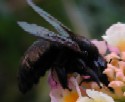 |
ANTS
-
Forelius analis:
I watched a sparrow spot a crumb of candy on the walkway. But when the
sparrow tried to take it, it was repelled with defensive gases released by the horde of ants that had
found it first. Large numbers of these ants were also traveling in quick
columns on mesquite trunks.
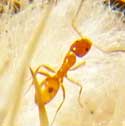
-
Brachymyrmex: These ants dominated on the trunks of Alepo Pine, Carob,
and Olive trees.
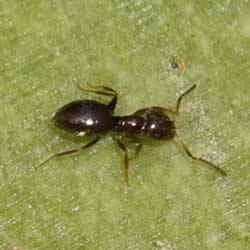
BUTTERFLIES
-
Sleepy Sulfur: Orange-yellow butterflies about 35 mm wide. They bounce
along the ground in a seemingly lazy fashion until they are chased as with a
butterfly net!
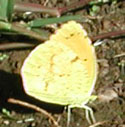
-
Marine Blue: Tiny blue butterflies flitting around the branch tips of
mesquite and ironwood where their caterpillars can be found (not easily!).

FLIES
Can flies be interesting? Don't think of House Flies
and Blow Flies that gather about human-generated filth! There are thousands of
fly species that avoid such material, never bother people, and have fascinating
stories to tell. For example, at the shore of the ponds can be found Dance Flies
(Empididae) that rarely venture far from the water's edge. Male Dance Flies,
roughly 5 mm, can be found guarding the tops of flat stones. They run swiftly
about the rock challenging intruders to side-to-side maneuvering and head
butting. Like miniature rams, they defend their right to mate with female
empidids that come to lay their eggs in the mats of dead algae that have washed
up on shore.

Other Urban Habitats
Phoenix &
Scottsdale Canals
Scottsdale Ponds
Desert Botanical Garden

Sonoran Desert Naturalist
Home Page
Sonoran Desert
Places
Urban Habitat
Index Page
Copyright Michael J. Plagens, 1998-2011
Updated 24 Nov. 2019.

